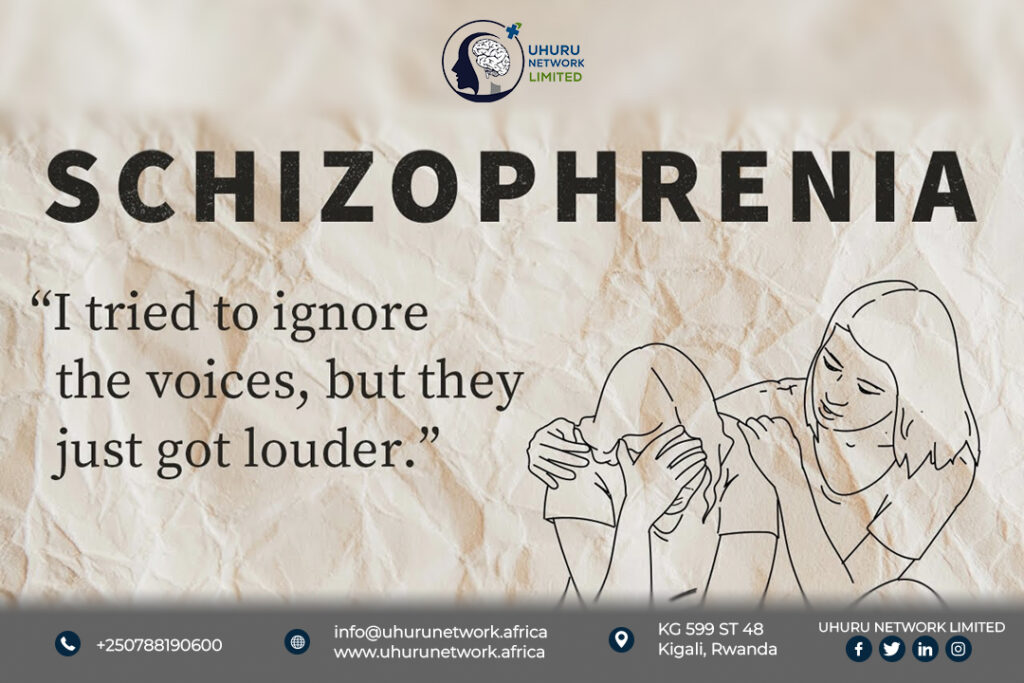Mental Health is manageable.
Anxiety
In 2019, 301 million people were living with anxiety, including 58 million children and adolescents (1). Anxiety is characterized by excessive fear and worry and related behavioral disturbances. Symptoms are severe enough to result in significant distress or significant impairment in functioning. There are several different kinds of anxiety episodes, such as: generalized anxiety disorder (characterized by excessive worry), panic disorder (characterized by panic attacks), social anxiety disorder (characterized by excessive fear and worry in social situations), separation anxiety disorder (characterized by excessive fear or anxiety about separation from those individuals to whom the person has a deep emotional bond), and others. Effective psychological treatment exists, and depending on the age and severity, medication may also be considered.


Depression
In 2019, 280 million people were living with depression, including 23 million children and adolescents (1). Depression is different from usual mood fluctuations and short-lived emotional responses to challenges in everyday life. During a depressive episode, the person experiences a depressed mood (feeling sad, irritable, empty) or a loss of pleasure or interest in activities, for most of the day, nearly every day, for at least two weeks. Several other symptoms are also present, which may include poor concentration, feelings of excessive guilt or low self-worth, hopelessness about the future, thoughts about dying or suicide, disrupted sleep, changes in appetite or weight, and feeling especially tired or low in energy. People with depression are at an increased risk of suicide. Yet, effective psychological treatment exists, and depending on the age and severity, medication may also be considered.
Bipolar
In 2019, 40 million people experienced bipolar . People with bipolar experience alternating depressive episodes with periods of manic symptoms. During a depressive episode, the person experiences a depressed mood (feeling sad, irritable, empty) or a loss of pleasure or interest in activities, for most of the day, nearly every day. Manic symptoms may include euphoria or irritability, increased activity or energy, and other symptoms such as increased talkativeness, racing thoughts, increased self-esteem, decreased need for sleep, distractibility, and impulsive reckless behavior. People with bipolar are at an increased risk of suicide. Yet effective treatment options exist including psycho-education, reduction of stress and strengthening of social functioning, and medication.


Post-Traumatic Stress Disorder (PTSD)
The prevalence of PTSD and other mental disorders is high in conflict-affected settings (3). PTSD may develop following exposure to an extremely threatening or horrific event or series of events. It is characterised by all of the following: 1) re-experiencing the traumatic event or events in the present (intrusive memories, flashbacks, or nightmares); 2) avoidance of thoughts and memories of the event(s), or avoidance of activities, situations, or people reminiscent of the event(s); and 3) persistent perceptions of heightened current threat. These symptoms persist for at least several weeks and cause significant impairment in functioning. Effective psychological treatment exists.
Schizophrenia
Schizophrenia affects approximately 24 million people or 1 in 300 people worldwide (1). People with schizophrenia have a life expectancy 10-20 years below that of the general population (4). Schizophrenia is characterized by significant impairments in perception and changes in behavior. Symptoms may include persistent delusions, hallucinations, disorganized thinking, highly disorganized behavior, or extreme agitation. People with schizophrenia may experience persistent difficulties with their cognitive functioning. Yet, a range of effective treatment options exist, including medication, psycho-education, family interventions, and psycho-social rehabilitation.


Eating Disorders
In 2019, 14 million people experienced eating disorders including almost 3 million children and adolescents (1). Eating disorders, such as anorexia nervosa and bulimia nervosa, involve abnormal eating and preoccupation with food as well as prominent body weight and shape concerns. The symptoms or behaviors result in significant risk or damage to health, significant distress, or significant impairment of functioning. Anorexia nervosa often has its onset during adolescence or early adulthood and is associated with premature death due to medical complications or suicide. Individuals with bulimia nervosa are at a significantly increased risk for substance use, suicidality, and health complications. Effective treatment options exist, including family-based treatment and cognitive-based therapy.
Disruptive behavior and dissocial disorders
40 million people, including children and adolescents, were living with conduct-dissocial disorder in 2019 (1). This disorder, also known as conduct disorder, is one of two disruptive behavior and dissocial disorders, the other is oppositional defiant disorder. Disruptive behavior and dissocial disorders are characterized by persistent behavior problems such as persistently defiant or disobedient behaviors that persistently violate the basic rights of others or major age-appropriate societal norms, rules, or laws. Onset of disruptive and dis-social disorders, is commonly, though not always, during childhood. Effective psychological treatments exist, often involving parents, caregivers, and teachers, cognitive problem-solving or social skills training.


Neurodevelopmental disorders
Neurodevelopmental disorders are behavioral and cognitive disorders, that? arise during the developmental period, and involve significant difficulties in the acquisition and execution of specific intellectual, motor, language, or social functions.
Neurodevelopmental disorders include disorders of intellectual development, autism spectrum disorder, and attention deficit hyperactivity disorder (ADHD) amongst others. ADHD is characterised by a persistent pattern of inattention and/or hyperactivity-impulsivity that has a direct negative impact on academic, occupational, or social functioning. Disorders of intellectual development are characterised by significant limitations in intellectual functioning and adaptive behaviour, which refers to difficulties with everyday conceptual, social, and practical skills that are performed in daily life. Autism spectrum disorder (ASD) constitutes a diverse group of conditions characterised by some degree of difficulty with social communication and reciprocal social interaction, as well as persistent restricted, repetitive, and inflexible patterns of behaviour, interests, or activities. Effective treatment options exist including psychosocial interventions, behavioural interventions, occupational and speech therapy. For certain diagnoses and age groups, medication may also be considered.
Are you ready to talk to someone
Schedule a free consultation with our team and let’s make things happen!
contact us

